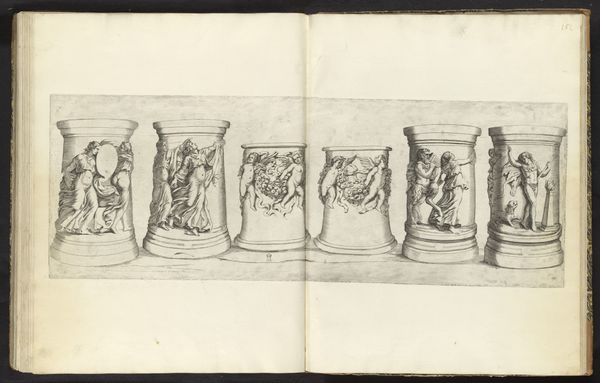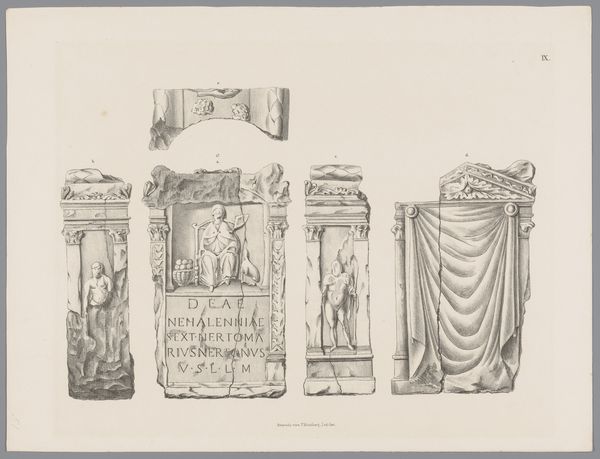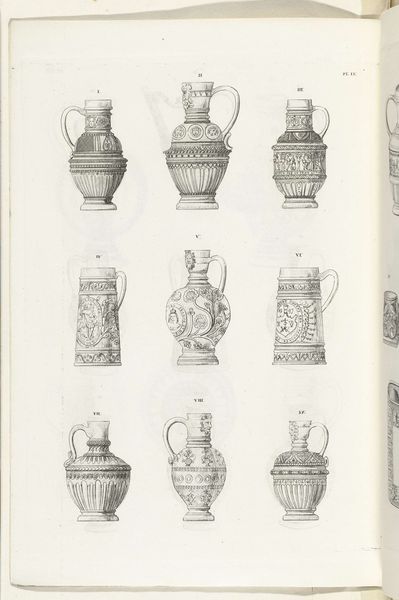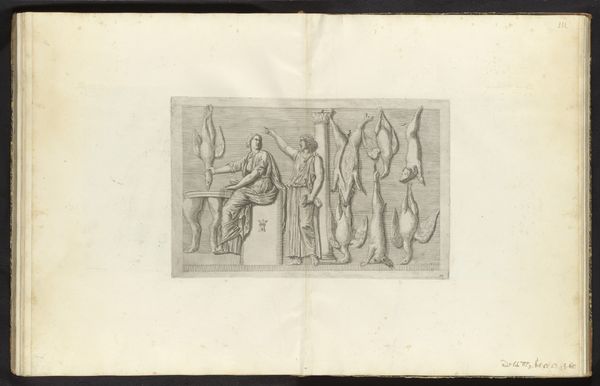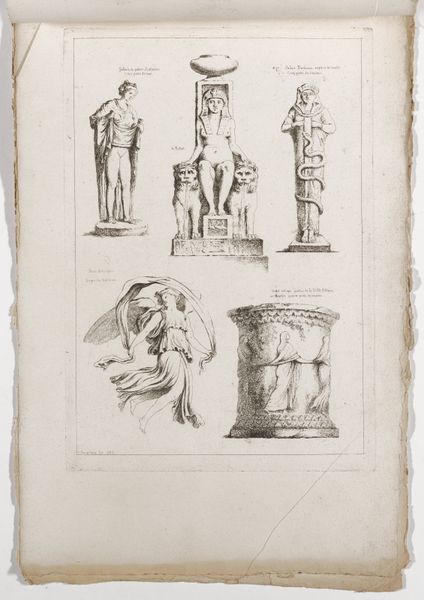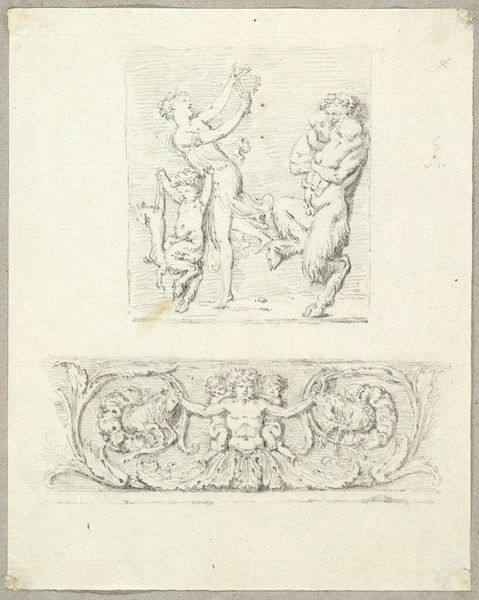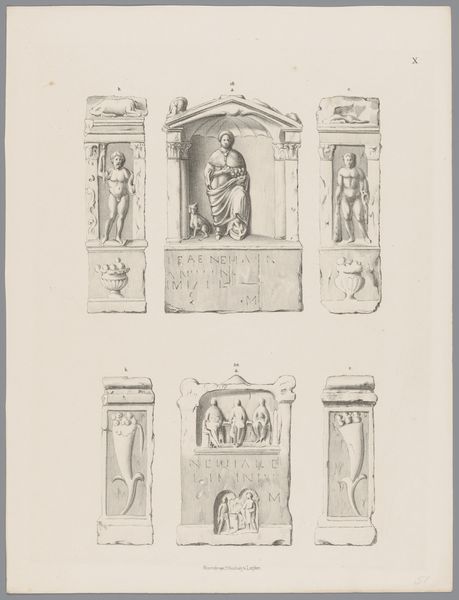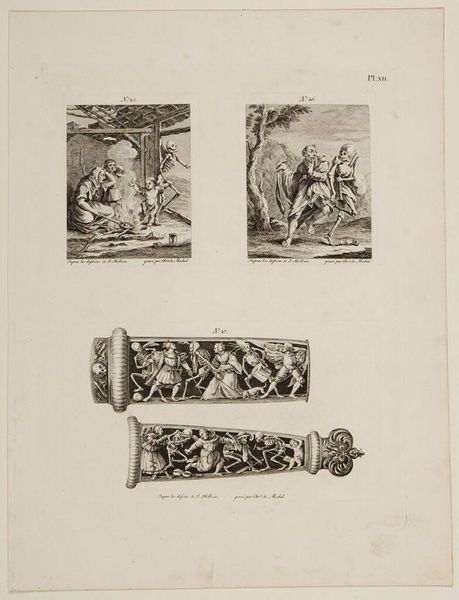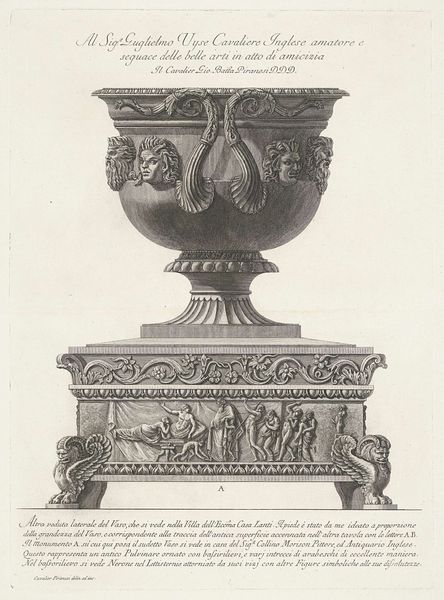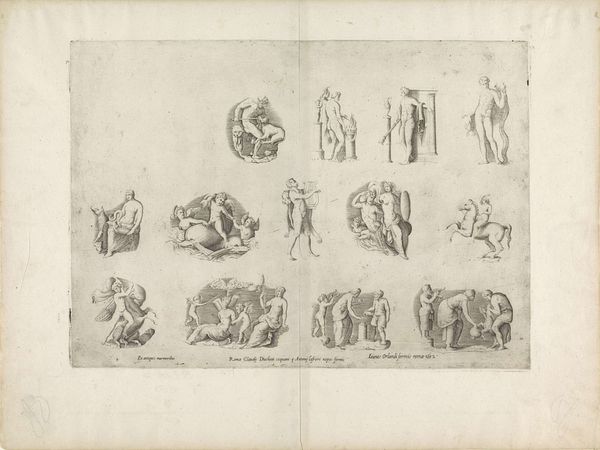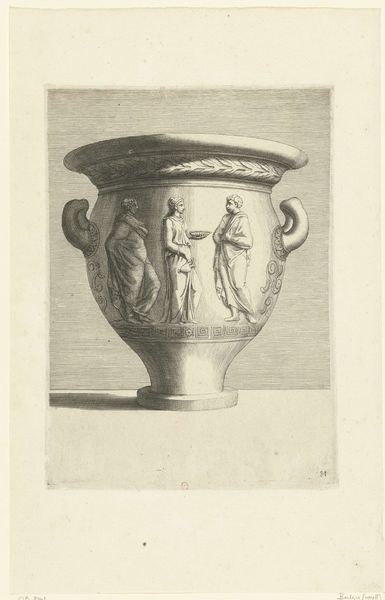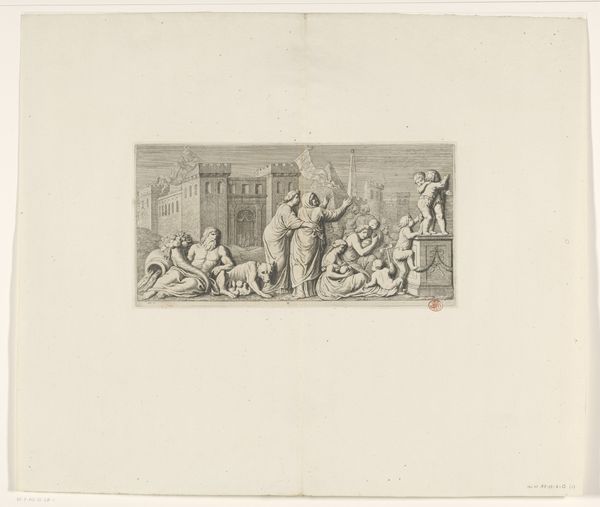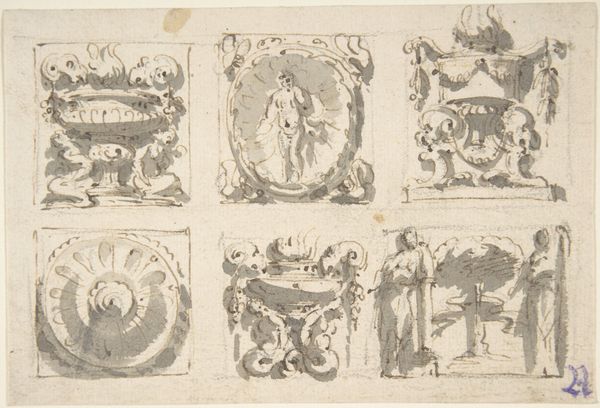
drawing, print, paper, pen, engraving
#
drawing
#
allegory
# print
#
pencil sketch
#
paper
#
11_renaissance
#
geometric
#
column
#
pen-ink sketch
#
pen
#
history-painting
#
engraving
Dimensions: height 245 mm, width 693 mm
Copyright: Rijks Museum: Open Domain
Curator: Here at the Rijksmuseum, we have a fascinating drawing titled "Zuilen waarop de geschiedenis van Pluto en Proserpina," or "Columns depicting the history of Pluto and Proserpina," created by Reinier van Persijn around 1640. Editor: It's a somber scene. Even though it is a drawing, I am sensing a cold and stony texture and atmosphere about it. Curator: The work shows a series of six columns, each illustrating a scene from the classical myth of Pluto and Proserpina – the abduction, Proserpina in the underworld, and so on. Van Persijn was known for his engravings, and here, he’s meticulously rendered these scenes. Editor: I see the progression of the myth, almost like a comic strip carved in stone. It’s striking how it condenses a violent act into a decorative, almost palatable form, meant for an elite audience during the Renaissance. Is the idea to show them in progression? Curator: Precisely. It’s part of a broader cultural fascination with classical mythology during that time. The columns themselves signify history and power, invoking the grandeur of ancient civilizations. Displaying them in series provides a continuous visual narrative about these well-known characters. Editor: It's a potent example of how dominant narratives are reinforced. We are meant to see the ‘history’ on these columns, and it risks neutralizing Pluto's actions by integrating it into the historical and artistic norms of the period. The use of print ensures its wider dispersal to those with access. I see the ways in which the powerful, and their abuses of power, are romanticized. Curator: I agree it is important to consider this. These works circulated widely in printed form and often shaped public perceptions. It is fair to look into their circulation and intended effect, the classical myths also provided a framework to talk about powerful emotions. Editor: Looking closely at these "decorative" columns makes me wonder about whose stories get to be told, and how we contextualize harmful historical narratives. The role of institutions like ours to really grapple with this mythology critically is key to shifting understanding. Curator: Absolutely. Examining how historical prints contributed to social norms and hierarchies offers insight into cultural production of the past, hopefully enriching how we assess present-day culture.
Comments
No comments
Be the first to comment and join the conversation on the ultimate creative platform.
